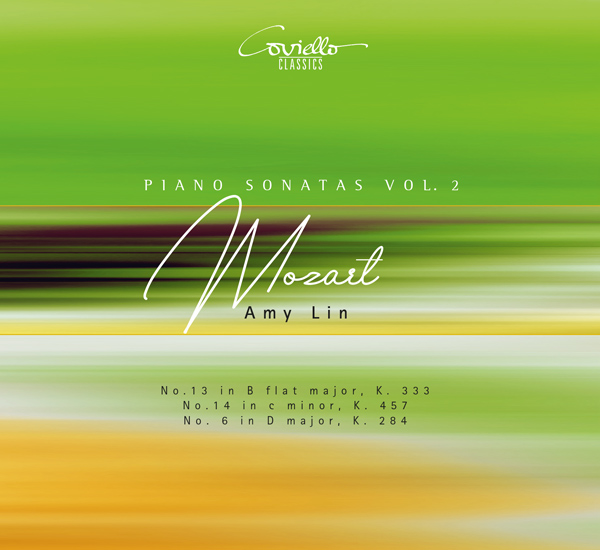
Wolfgang Amadeus Mozart
Amy Lin ⋅ piano
Edition: Coviello Classics
Booklet: de / en / fr
Media: CD / HD Download
COV 92404
His 18 piano sonatas can be described as the secret stars of Wolfgang Amadeus Mozart’s extensive œuvre – they were often important areas of experimentation, which in Mozart’s short biography describe a development from early rococo to classical maturity, in which he explored new compositional techniques and then later transferred these to the larger genres. This is exemplified by the three works now recorded by Amy Lin in her familiar sensitive manner: the sonata K. 333 emphasises the lyrical and pastoral. In K. 284, the 18-year-old composer establishes the alternation between “quasi-tutti” based on the orchestral writing and soloistic passages in dialogue-like interplay. The famous C minor Sonata K. 457, which Beethoven admired so much, shows a completely different, darkly dramatic tone and thus Mozart’s fascinating stylistic diversity in this genre as well.
| Wolfgang Amadeus Mozart (1756-1791) | |||
| Klaviersonate Nr. 13 B-Dur, KV 333 Piano Sonata No. 13 in B-fl at Major Sonate pour piano N°13 en si bémol majeur |
|||
| 1. | I | Allegro | 7:12 |
| 2. | II | Andante cantabile | 11:20 |
| 3. | III | Allegretto grazioso | 6:26 |
| Klaviersonate Nr. 14 c-Moll, KV 457 Piano Sonata No. 14 in c minor Sonate pour piano N°14 en ut mineur |
|||
| 4. | I | Molto allegro | 8:09 |
| 5. | II | Adagio | 7:15 |
| 6. | III | Allegro assai | 4:23 |
| Klaviersonate Nr. 6 D-Dur KV 284 Piano Sonata No. 6 in D Major Sonate pour piano N°6 en ré majeur |
|||
| 7. | I | Allegro | 5:22 |
| 8. | II | Rondeau en Polonaise | 4:37 |
| 9. | III | Tema con variazioni | 15:19 |
| Total time: | 1:10:09 | ||
